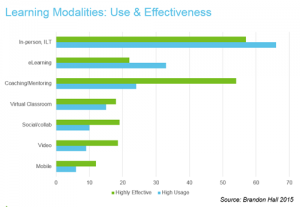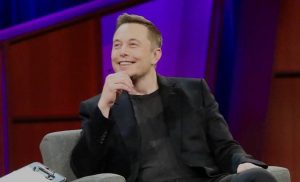December 30, 2014

The new year is right around the corner and everyone published social media predictions for 2015. As is my habit, rather than creating my own post, I’ve scoured the Internet (via Storify) to bring the best social media predictions for 2015 to you.
5 MegaTrends
Of course, trends emerge in these social media predictions for 2015 from leading social media companies. Let’s take a moment to talk about these trends:
1. The customer journey
I think IBM’s post says it best — 2015 is the year of the customer journey in the post from Target Marketing. Intimately tied to this trend is content marketing — the new SEO and hottest thing in social media marketing today.
The customer journey begins with the first touch — which in the digital world may be a product mention on Twitter or an Instagram with your brand label showing — and ends only when the customer is forever lost to your brand — through changing needs or death. Slowly, brands recognize what we in the marketing discipline have known for decades — marketing is much more than advertising and selling. Marketing is managing the customer journey, which often looks more like a roller coaster ride than a linear progression from awareness to post-purchase evaluation.
Framing marketing, whether digital or traditional, as a customer journey focuses attention on the customer, as it should have always been. According to Michael Lazerow in an AdAge article:
People we labeled “consumers,” “viewers,” and “users” now expect us to know not only who they are but what they want, the devices they carry, the apps they use and the products they buy. Instant isn’t soon enough. Free isn’t free enough. Is it fair? Who cares? It’s expected.
Merging the notion of a customer journey with content marketing brings great rewards to leading organizations who manage this process seamlessly across platforms and channels. So what does this look like?
According the Ellen Valentine with IBM Silverpop, this social media prediction is the new megatrend and looks something like this:
Leading marketers – the organizations pushing boundaries and driving significant business results – realize that great marketing entails helping prospects along in the customer journey. What makes a customer’s journey especially meaningful? Helpful content as a prospect moves through his or her buying experience and additional follow-up information to encourage lifetime loyalty.
From researching alternatives and planning a change to evaluating and comparing providers and selecting a solution, digital marketing can both orchestrate and support each of these stages.
2. Data-driven marketing
Gone are the days of John Wanamaker where he said:
Half the money I spend on advertising is wasted; the trouble is I don’t know which half.
No business can afford to waste half their advertising (or marketing) budget. Instead, businesses need data to improve their spend (and ROI). In part, that explains why a larger percentage of marketing budgets funnel into digital media every year — because digital marketers KNOW what kind of results they get and can optimize their spend to achieve their goals.
Instead of broadcasting a $ 4 million ad through the ethereal network of 350 million Super Bowl viewers with only sales trend analysis to support ROI, digital marketers spend money on content marketing, advertising on social networks, and analytics tools. The digital marketing spend, driven by these analytics, not only shows where money is wasted, but reduces waste by showing which activities to eliminate and which to increase due to their high ROI.
The surprise is how long it’s taken for business leaders to move investment into digital media from traditional media and how they’ve hedged their bets by investing more heavily in traditional media. For instance, a BIA/Kelsey supports a social media prediction of $ 8.3 billion for 2015. Of course, even that lofty number (which grew from around $ 2 billion in 2010) is dwarfed by spending on traditional advertising, predicted to reach $ 600 billion in 2015, meaning businesses allocate just over 1% of their advertising budgets to social media.
So, why the insanity of spending 99% of your budget when you can’t even determine what is wasted? The same reason managers once bought only IBM products — no one ever got fired for buying IBM. In the 1980s, when this concept was introduced, IBM sold the computers in most companies. Thus, if you bought IBM and things didn’t work out, you could always defend your purchase because everyone else bought IBM, too. Of course, we know what happened — IBM failed so miserably at adapting to changing technology that IBM is now known for its software, not its hardware.
In the same vein, marketers are afraid to commit more resources to social media. If their gamble fails, they’ll get fired because they chose a risky path instead of staying with the well-traveled path of traditional media. Even though traditional media faces enormous challenges from changing TV viewing habits, declining newspaper readership, etc, traditional advertising represents the known, while social media is unknown. Businesses play it safe — stupidly leaving profits on the table.
3. Community
Community and engagement have been the rallying cry of social media marketers from the beginning of social media, so why do folks still include community in social media predictions for 2015? Mainly because businesses haven’t yet tapped the potential for community engagement. Instead, too many use social media as just another channel for spreading traditional media messages. In 2015, more businesses will understand the power of community engagement.
When Simply Measured asked social media leaders for social media predictions for 2015, several mentioned community. For instance, Brian Fanzo, Chief Digital Strategist at BroadSuite, talks about using social media to build communities as two-way communication, empowering both customers and employees to advocate for the brand.
Brand communities not only amplify brand messages through sharing, commenting, and liking, they act as subtle influencers to persuade friends to buy your brand. Plus, consumer-generated content feeds into your content marketing in a powerful way.
4. Paid advertising
If you’re still running your social media campaigns with organic reach (earned media and owned media), you’ve missed the boat.
When Facebook decreased brand’s organic reach by half in mid-year, Oglivy predicted organic reach on Facebook would be close to 0% by now — which it is rapidly approaching. With new Twitter sponsored Tweets and other major social networks focusing more on profitability, organic reach is plummeting.
Declining organic reach makes it hard for small brands to compete with the big boys, but provides opportunities for larger brands because a focus on ad revenue led to enhanced advertising tools for marketers. For instance, Facebook offers better analytics, but, more importantly, offers better targeting tools that increase the ROI of online advertising efforts. I expect other social networks to follow.
5. Tools
Of course, what social media predictions post would be complete without a mention of new tools or shifts in the importance of tools.
Mobile – mobile is finally living up to the predictions we’ve made for years and the “mobile first” strategy is catching on among marketers.
Visual – the internet is a huge photo gallery and improving visuals is important for brands. Of course, that includes video, which is Michael Stelzner’s major social media prediction for 2015. Some tools to help are:
- Twitter cards — which embed images within your tweets
- Canva — promoted by Guy Kawasaki, which puts powerful graphic design tools in the hands of anyone
- Instagram, Flickr, YouTube, and Vine
New social networks – Ello, Snapchat
New tools for analytics and social media automation
What are your social media predictions for 2015?
Add to my list in the comments below.
We welcome the opportunity to show you how we can make your marketing SIZZLE. Sign up for our FREE newsletter and get the 1st chapter of our book.
Digital & Social Articles on Business 2 Community
(580)
Report Post








